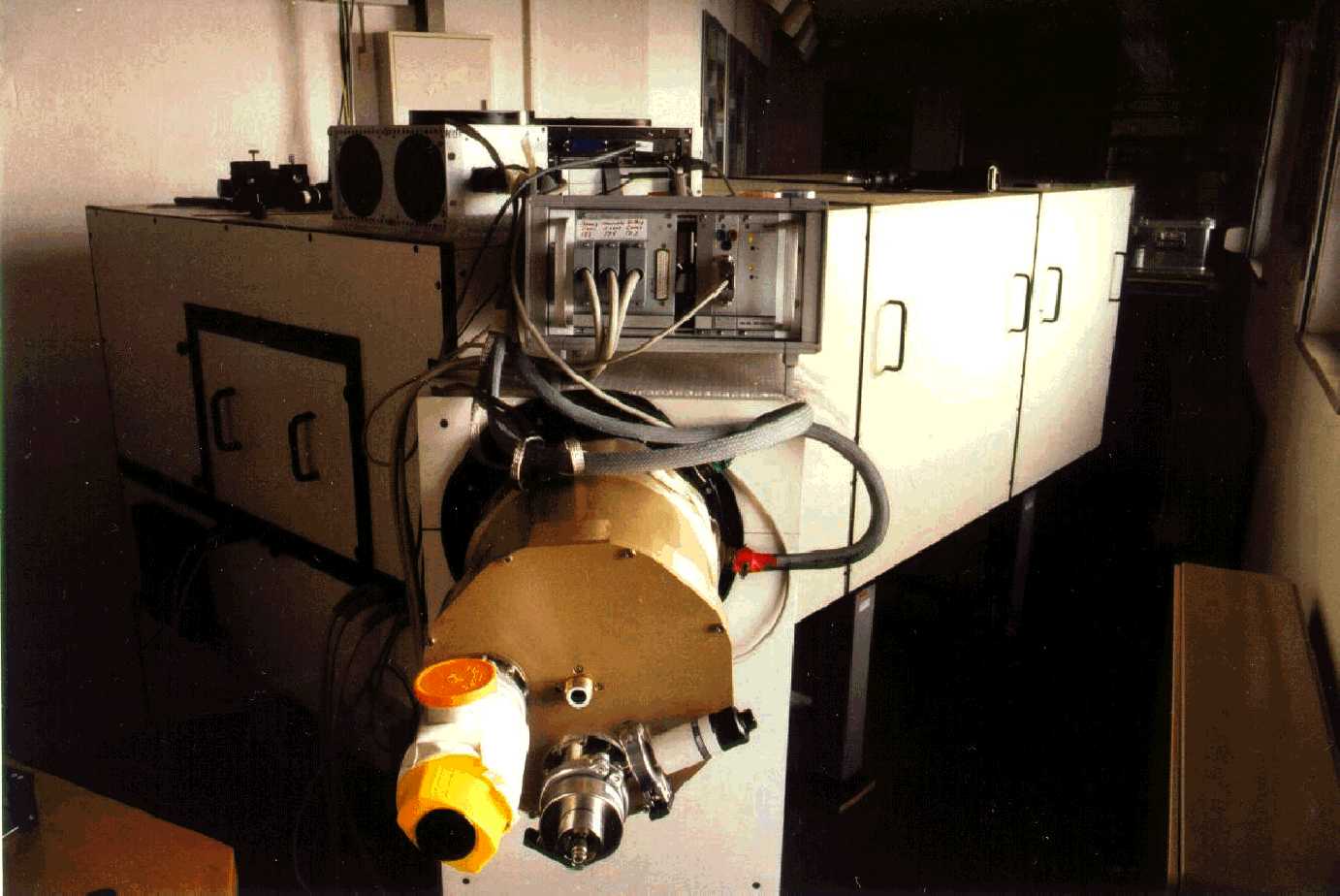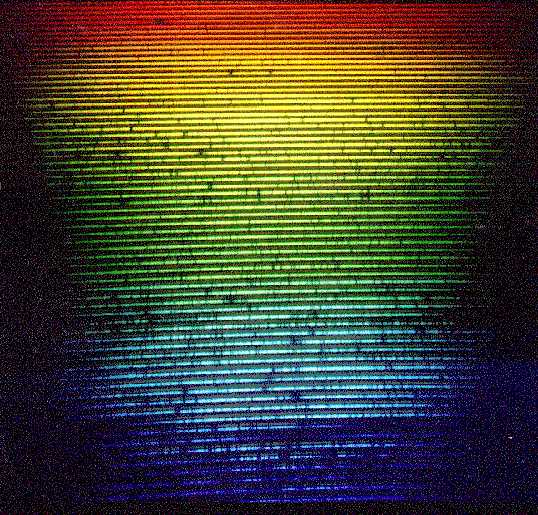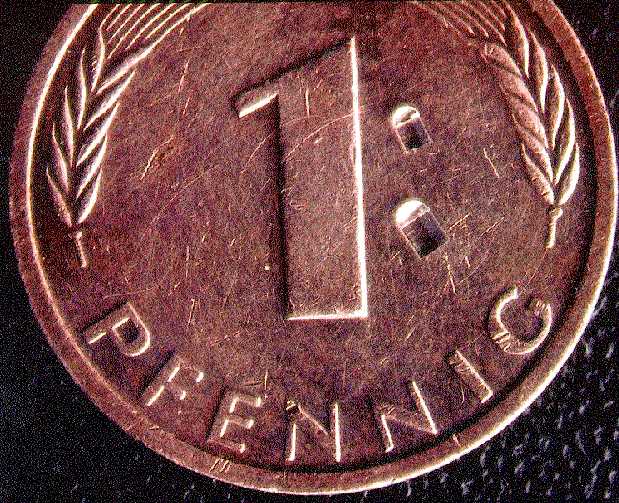
Personal support for users from members of the FOCES team has now come to an end.
FOCES users are urged to read this (online) documentation and download the printed (PostScript) version; further questions and requirements should be addressed to the staff on Calar Alto.

FOCES follows a white pupil design in near-Littrow mode with two off-axis collimators and intermediate slit image. Two prisms on a tandem mount provide the cross-dispersion of the spectrograph beam received by a transmission camera. The basic properties of the spectrograph are:
Optical Properties:
Theoretical resolution maximum with 2 pixel element is 65000 (0.015 mm pixel distance), resolution maximum
optimized for throughput is 40000 (0.024 mm pixel distance).
Collimator beam size is 152.4 mm, with an f/10 focal ratio.
 |
Milton Roy R2 echelle grating with 153 x 305 mm ruled area. Double prism cross disperser with 42 degree total deviation. Spectrograph camera f/3 in transmission. Focal length is 455 mm. Off-Littrow angle of transverse deviation is 0.7 degrees. Full spectral coverage is 300 nm in 70 echelle orders using the single fibre mode (see figure on the left: Procyon), or 120 nm in 30 orders with the dual-fibre mode. Limiting magnitude is V = 11 in 60 min with a S/N = 100 at R = 40000 on the 2.2m telescope. This number may increase in case of excellent seeing. |
Spectrograph Mounting:
On 2400 x 900 mm optical bench at either 2.2m and 3.5m telescopes. The instrument has a special transport frame.
However, due to installation problems the instrument is currently available only at the 2.2m telescope.
Entrance Slit:
Used to recover resolution if entrance diaphragm at Cassegrain focus is wide open to pass starlight even in case
of bad seeing. Slit jaws and decker are adjusted by opening the spectrograph front door.
Collimator:
Two off-axis paraboloids cut out of a larger f/2 blank.
Echelle Grating:
Mounted upside down in a cardanic device with all three axes adjustable. Transverse horizontal axis is under motor
control. Its position determines the centering of the echelle blaze function.
Folding Mirror:
Used to reflect the converging beam in the vicinity of the intermediate slit image which passes a very efficient
straylight baffle.
Prism Crossdisperser:
Two LF5 prisms mounted on a symmetric tandem drive which is under motor control. The prism position determines
the spectral region.
Grism Crossdisperser:
Two grisms (red or blue), optionally driven into the beam just in front of the prisms; under motor control. The
grisms are used for the dual-fibre mode only; they provide increased cross-dispersion.
Spectrograph Camera:
Transmission optics in f/3 design built by Carl Zeiss Jena. 455 mm focal length; 0.024 mm imaging residuals
over the whole field (35 mm).
CCD Camera:
Optimized for Tektronix 1024 x 1024 pixel chip with 0.024 mm pixel distance to yield R = 40000. Using a 2048 x
2048 chip with 0.015 mm pixel distance, the maximum resolution of R = 65000 will be achieved, however, with substantial
light losses.
Click here to view a line drawing of the FOCES instrument.
 |
FOCES is linked to the Cassegrain focus of either 2.2m or 3.5m telescope by optical fibres that bridge a distance of roughly 18 meter to the Coude room. Currently the fibres are from Polymicro with 0.100 mm diameter. Microlenses are glued on fibre entrance and exit in order to re-image the telescope pupil on the fibre diameter and on the spectrograph entrance slit (see figure on the left for a comparison with a Pfennig, the smallest German coin). The fibre heads are mounted in plugs that are connected to a very stable positioning sledge. |
The fibre positioning units are fixed to the telescope module (input) and to the spectrograph slit (output) by screws and springs. The normal mode uses a single fibre; a dual-fibre mode can be used for sky background correction of faint sources at the 3.5m telescope.
The telescope module is mounted at the Cassegrain flange. It consists of of the following parts:
 |
Fibre positioning unit: Carries the fibre head plug and the entrance diaphragm. A number of different circular apertures are available. For single-fibre mode these are 0.130, 0.200, and 0.300 mm, respectively. The dual-fibre mode contains two 0.300 mm holes at a focal plane distance of 3 mm. The proper position of the object can be observed by the light reflected from the entrance diaphragm using the telescope guiding facility. If necessary, fibres are always exchanged together with their repositioning plates. Entrance diaphragms may be exchanged separately. Moveable Mirror: Mounted on a rotating sledge and controlled by motor drives it can be moved in and out of the object field receiving light from either calibration light source available. |
Calibration Lamps:
Mounted at 90 degrees distance around the module cylinder metal tubes carry the halogene flatfield lamp and the
ThAr calibration lamp, respectively. Their light passes a diffusor and is then focussed on the entrance aperture.
Further information is available in the following form:
FOCES Documentation, Vol. 1, 2, 3A,B.
This is the original full documentation including hardware drawings and programs. It is available only at the USM,
at the MPIA Heidelberg, and at the DSAZ on Calar Alto.
FOCES Kurzbeschreibung (auf Deutsch).
Enthält eine mit Abbildungen versehene Beschreibung des Instruments und eine Anleitung zur Beobachtung. Diese
Beschreibung steht als komprimierte Postscript-Version zur Verfügung.
FOCES Installations-Anleitung (auf Deutsch).
Ist nur für die technische Beschreibung des Auf- und Umbaus von Interesse.
Pfeiffer, M.J., Frank, C., Baumüller, D., Fuhrmann, K., Gehren, T. 1998, FOCES - a fibre optics Cassegrain échelle spectrograph, Astron.Astrophys.Suppl. 130, 381.
Last revision: March 13, 2002
Thomas Gehren (gehren@usm.uni-muenchen.de)